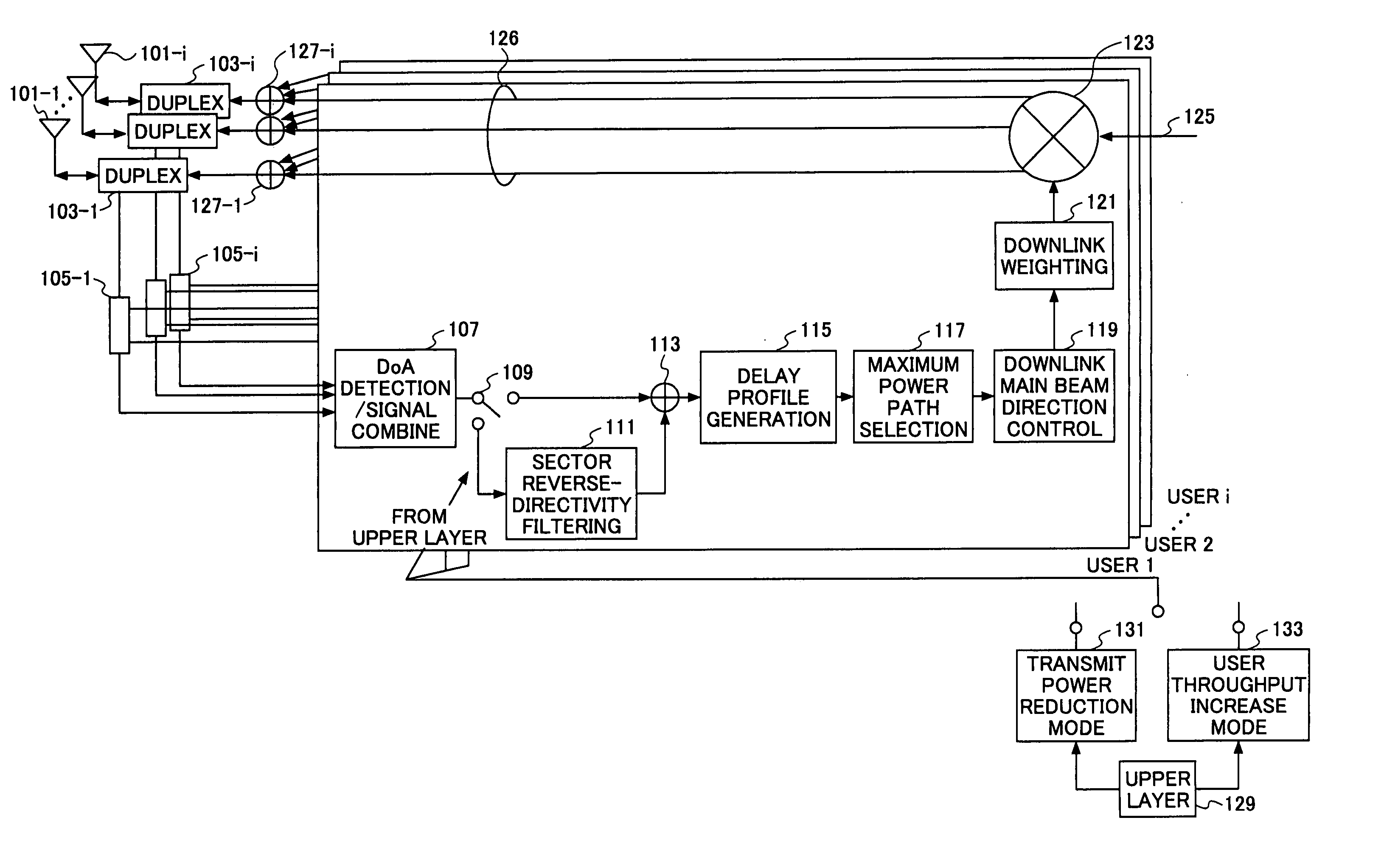Method and apparatus for performing adaptive control of beam forming
a beam forming and beam technology, applied in multiplex communication, polarisation/directional diversity, wireless commuication services, etc., can solve the problems of local degradation, high interference spot, and non-uniform power distribution radiated from the antenna, so as to prevent the reduction of user throughput per sector
- Summary
- Abstract
- Description
- Claims
- Application Information
AI Technical Summary
Benefits of technology
Problems solved by technology
Method used
Image
Examples
first embodiment
[0043]FIG. 3 is a schematic diagram of a beam-forming adaptive control apparatus according to the invention. The beam-forming adaptive control apparatus includes antennas 101-1 through 101-i, duplexers 103-1 through 103-i for isolating transmitters from a receivers, user separators 105-1 through 105-i, a DoA (direction of arrival) detection / signal combining unit 107, a mode switch 109, a sector reverse-directivity filter 111, an adder 113, a delay profile generator 115, a maximum power path selector 117, a downlink main beam direction control unit 119, a downlink weighting unit 121, a multiplier 123, and user multiplexing units 127-1 through 127-i.
[0044] A signal processing section that comprises the DoA detection / signal combining unit 107, the mode switch 109, the sector reverse-directivity filtering unit 111, the adder 113, the delay profile generator 115, the maximum power path selector 117, the downlink main beam direction control unit 119, the downlink weighting unit 121, the ...
second embodiment
[0061]FIG. 5A illustrates an example of the signal power distribution of a 60-degree sector antenna in the throughput increase mode. FIG. 5B illustrates an improved signal power distribution of the same sector antenna operating under optimization control, which will be described in the The dashed arrows, the solid arrows, the lengths of the arrows, and the thickness of the lines indicate the same parameters as those shown in FIG. 4.
[0062] The distribution depicted in FIG. 5A shows the direction of the main beam to be transmitted, which is determined based on the DoA information and the signal power received at the antenna.
[0063] The major difference from the distribution shown in FIG. 4 is that the desired transmit direction of the user data has a substantially uniform distribution. The antenna transmit power at the end of the antenna becomes greater in the direction with less antenna gain, and consequently, the transmit power per sector increases.
[0064] However, the spatial sign...
PUM
 Login to View More
Login to View More Abstract
Description
Claims
Application Information
 Login to View More
Login to View More - R&D
- Intellectual Property
- Life Sciences
- Materials
- Tech Scout
- Unparalleled Data Quality
- Higher Quality Content
- 60% Fewer Hallucinations
Browse by: Latest US Patents, China's latest patents, Technical Efficacy Thesaurus, Application Domain, Technology Topic, Popular Technical Reports.
© 2025 PatSnap. All rights reserved.Legal|Privacy policy|Modern Slavery Act Transparency Statement|Sitemap|About US| Contact US: help@patsnap.com



